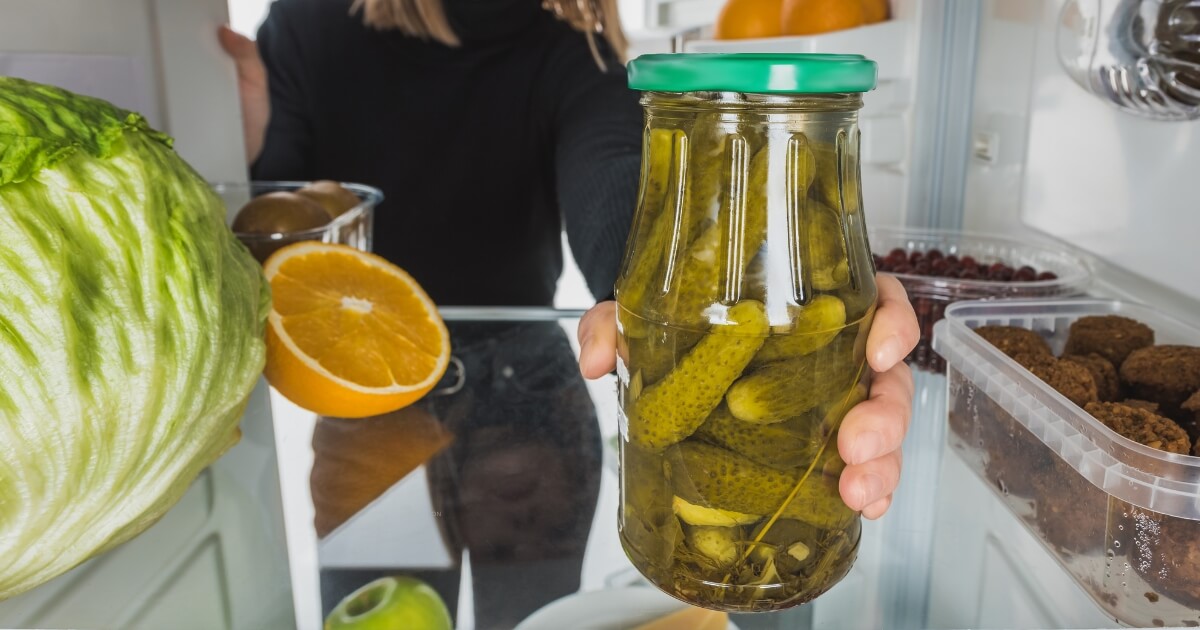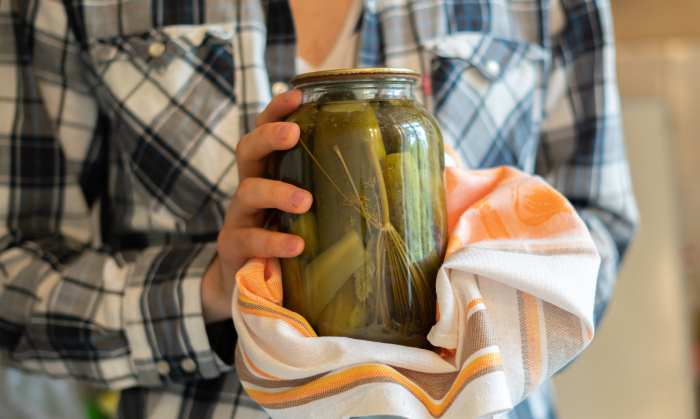If you love pickles as much as I do, you may not have to worry about how long they’ll last in the fridge. But sometimes, you might find an unexpected jar that’s been pushed around.
While pickles can last for years in an unopened jar, once you open the jar, the clock will start ticking. The good news is that if you keep them in your fridge under the right conditions, that clock can tick for up to three months.

In this guide, I’ll explain the shelf life of different types of pickles and the signs to look for when they’re past their prime. Whether you’re a fan of store-bought varieties or dabble in homemade pickling, let’s ensure your pickles stay deliciously safe and edible as long as possible.
Do Pickles Go Bad?
Yes, pickles will go bad over time, but more often, it’s the result of certain conditions like improper storage or contamination that cause them to spoil.
Most store-bought pickles go through pasteurization, which gives them a longer shelf life and helps keep them safe to eat. Plus, they often contain preservatives, giving them an extra edge in longevity.

But unpasteurized pickles bring more to the table with their live cultures and fermentation, offering probiotic perks. But, since they skip the pasteurization step, they have a shorter shelf life and need more TLC in storage and handling to keep them in top shape.
How Long Do Pickles Last?
Pickles in unopened jars can be stored in your pantry for 12-18 months, provided the temperature is under 75°F. Once opened, according to the USDA, you can keep them in the fridge, where they may stay fresh for up to 3 months. Unpasteurized pickles should always be refrigerated and used up within a few months.
Here’s a table to give you a better understanding of the shelf life of your pickles:
| Type of Pickle | Unopened Shelf Life (Pantry) | Opened Shelf Life (Fridge) |
|---|---|---|
| Regular Dill Pickles | 1-2 years | 1-3 months |
| Bread and Butter Pickles | 1-2 years | 1-3 months |
| Sweet Pickles | 1-2 years | 1-3 months |
| Gherkins | 1-2 years | 1-3 months |
| Homemade Dill Pickles | 6-12 months (if properly sealed) | 1-2 months |
| Homemade Sweet Pickles | 6-12 months (if properly sealed) | 1-2 months |
| Unpasteurized Pickles | Refrigerate immediately | 1-2 months |
| Kosher Dill Pickles | 1-2 years | 1-3 months |
| Spicy Pickles | 1-2 years | 1-3 months |
| Pickled Vegetables | 1-2 years | 1-3 months |
Please note:
- The shelf life will vary depending on the brand and the specifics of the pickling process. Check the best-by date on the jar.
- Homemade pickles may have a shorter shelf life due to variations in canning and preserving techniques.
- Due to the active bacteria present, unpasteurized pickles should always be refrigerated and consumed within a shorter timeframe.
- Always check for signs of spoilage, like a bad smell or changes in texture or color, regardless of the mentioned shelf life.
Do Pickles Need To Be Refrigerated?
Unpasteurized pickles and pasteurized pickles that have been opened must be kept in the fridge. If you store unpasteurized pickles in the pantry, your pickles will continue to ferment and eventually turn sour. Cold temperatures slow down this process, and room temperatures keep it going strong.
The Science Behind Pickles:
The process of pickling turns normal, boring cucumbers that go bad in a week into durable dills that can resist harmful bacteria. The secret? The brine.
This mixture of saltwater, vinegar, and sometimes spices like garlic and dill is a battlefield where good bacteria (lactic acid bacteria) outweigh the bad. These friendly microbes quickly turn sugars into lactic acid. And that acts as a natural preservative and gives pickles their tangy kick.
Pickles completely submerged in this highly acidic liquid helps protect them against bacteria. This applies to both store-bought and home-canned varieties. But remember, once they’re out of the brine, their resistance drops, and they’re more prone to spoilage.
How To Tell If Pickles Are Bad
Healthy pickles should be bright, crisp, and have a tangy or sweet smell to them. Their juice should be a clear, pale, amber color. A bit of white residue at the bottom of the jar may be a byproduct of the fermentation process.
To be safe, watch out for these signs of spoilage:
- Foul Odor: A shift from tangy to unpleasant smell.
- Texture Change: Pickles turning slimy or excessively soft.
- Color Shift: Loss of vibrant green, indicating potential fungus.
- Mold Presence: Look for brown or black specks or thin threads in the brine.
- Puffy Lid or Bubbles: A bulging jar lid or fizzing brine are signs of unstable or out-of-control fermentation, indicating that the pickles are unsafe to eat.

If your pickles or their brine show any of these changes, it’s best to discard them.
Tips For Storing Pickles
While pickles don’t usually last more than a month in my home, I have come across a few tips to help keep them fresher for longer.
Cold temperatures will preserve unpasteurized pickles for longer, but scum may still occasionally collect on the surface of the liquid. If you keep unpasteurized pickles, keep an eye on the juice and regularly remove any scum.
Whether pasteurized or not, pickles need to stay immersed in their juice. If you leave them liquid-less, they’ll quickly dry out and go bad. Even if just the tips are sticking out of the brine, bad bacteria can get a finger hold. Always keep your pickles completely submerged.
Speaking of fingers, don’t use your fingers or dirty utensils to grab pickles from the jar. The best way to ruin your pickles is to introduce them to contaminants from the outside of their jar. Keep them tangy and crunchy for longer by always using a clean spoon or fork.
And like many perishables, if you keep your pickles in the fridge door, you might expose them to too many changes in temperature. This is especially important for unpasteurized pickles, which can upset the balance in the jar’s ecosystem.
So, put them on the bottom shelf to keep temperature changes to a minimum.











